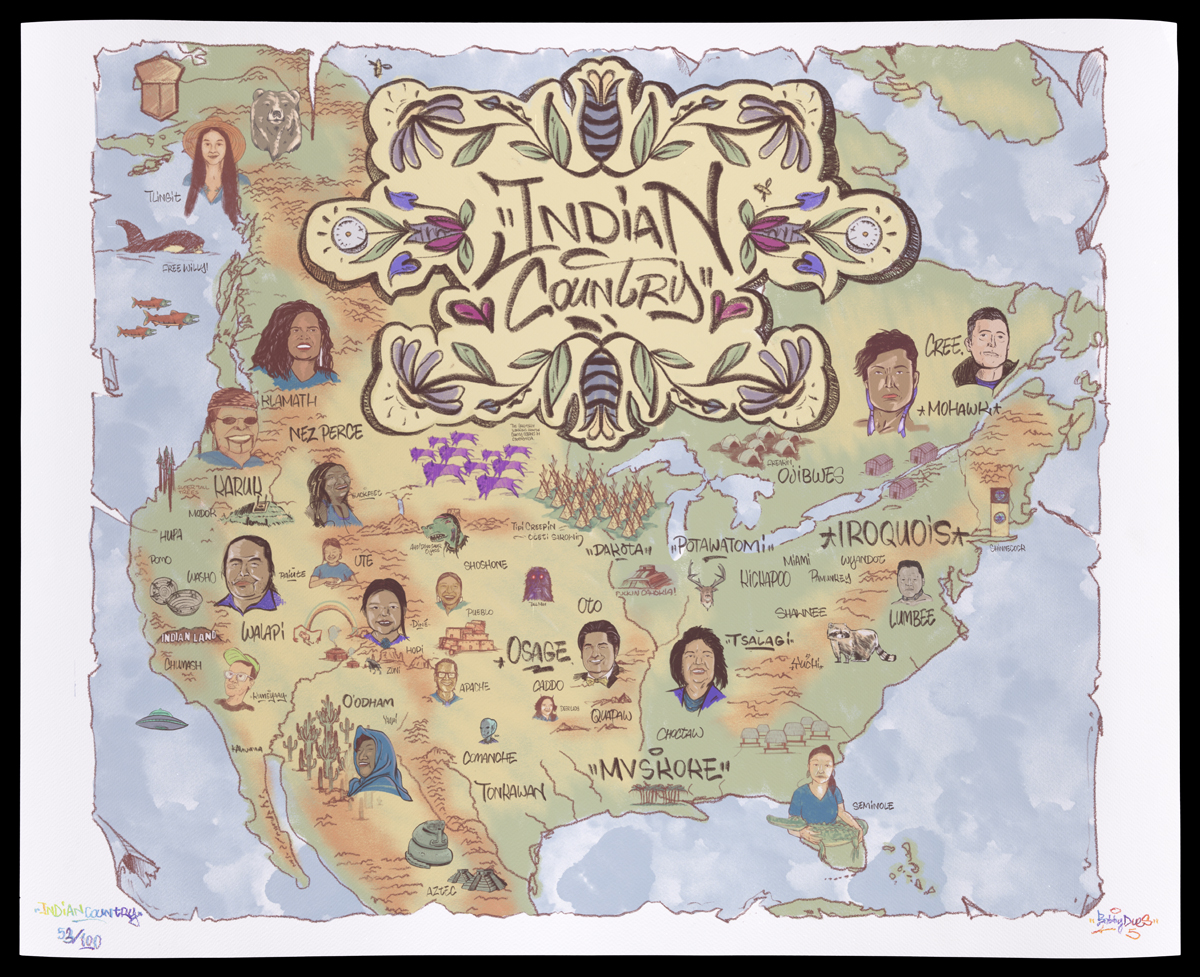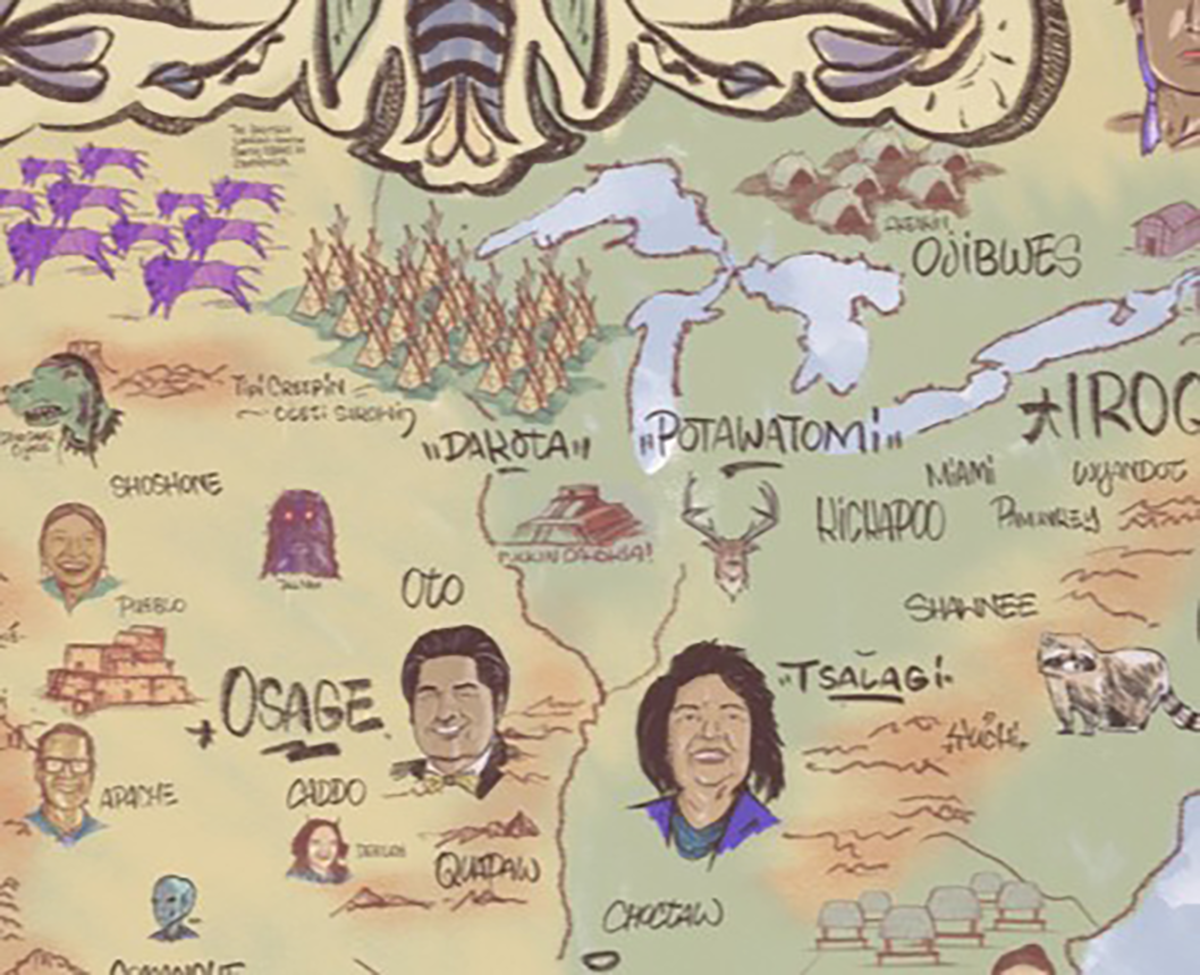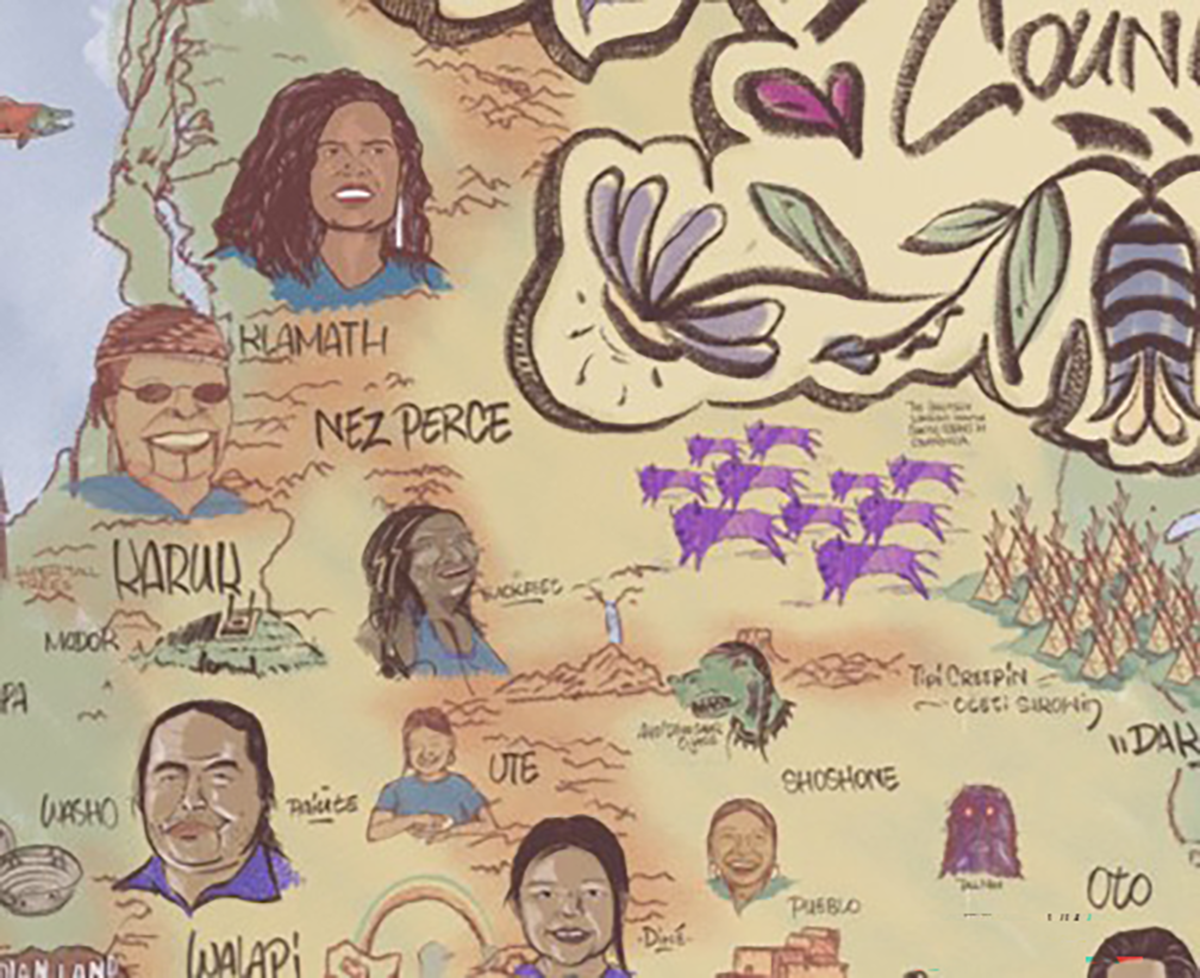“Indian Country”: The Work of Bobby “Dues” Wilson
Representation matters. And for communities that are marginalized, representation in mainstream media can feel like a long overdue recognition that can change everything.
For the Indigenous community, mainstream recognition came with the introduction of the Hulu FX original series Reservation Dogs. Created by 2024 MacArthur Fellow Sterlin Harjo (Seminole/Muscogee Creek) and Taika Waititi (Māori/Ashkenazi Jewish/Irish/Scottish/English), the series explored the adventures and growing pains of four Indigenous teenagers growing up on the Muscogee Reservation in rural Oklahoma. They deal with teenage shenanigans, growing up, and coping with the death of their friend Daniel, who dies before the events of season one take place.
The show featured a primarily Indigenous cast. The actors who played main characters included Devery Jacobs (Mohawk) as Elora, D’Pharaoh Woon-A-Tai (Oji-Cree) as Bear, Lane Factor (Caddo/Seminole/Muscogee Creek) as Cheese, and Paulina Alexis (Alexis Nakota) as Willie Jack. There were also appearances from recurring Indigenous actors such as Zahn McClarnon (Standing Rock Lakota), Dallas Goldtooth (Mdewakanton Dakota/Diné), Gary Farmer (Grand River Cayuga) and Jana Schmieding (Cheyenne River Lakota).

"Indian Country" map created by Bobby “Dues” Wilson (Sisseton-Wahpeton Dakota). From the Collections of The Henry Ford. / THF725033
The show focused on a number of topics within Indigenous communities, such as loss and suicide, poverty, boarding schools, storytelling, ceremonies, traditions, friendship, and adventures. It brought issues in Indian Country to the mainstream and an international audience. The show also featured works by Indigenous fashion designers, artists, musicians, and writers. One such artist is Bobby “Dues” Wilson (Sisseton-Wahpeton Dakota).
Known primarily as Bobby Dues, he works as a multimedia artist in the mediums of poetry, acting, comedy, and visual arts. A version of the print above appeared in Season 2, episode 10 of Reservation Dogs.Titled “Indian Country Map,” it depicts the United States, Canada, and parts of Mexico and shows the land as Indigenous land. It plays on the term Indian Country, which is defined as lands the federal government holds in trust for tribal nations. This includes reservations and allotments where title to the land has not been severed. It also refers to the Oklahoma territory, which was deemed Indian Country during the Indian Removal period.

A close-up of “Indian Country” shows Wilma Mankiller, the first female principal chief of the Cherokee Nation. From the collections of The Henry Ford. / THF725033
The artist, who was asked to create this map for who was asked to create this map for Reservation Dogs, depicts the culture, beauty, and uniqueness of the land and those who call it home. On the map, the artist calls out the many different tribal nations that called the land home and even features some notable people. In the area between Oklahoma and the southeastern part of the United States, we can see Wilma Mankiller (Cherokee), the first female principal chief of the Cherokee nation. The nation was removed to Oklahoma during Indian removal in a route that was called the Trail of Tears. Contemporary Indigenous artist Natalie Ball (Black, Modoc, and Klamath) is featured in her homelands in the Pacific Northwest. Ball also serves as a tribal council member for the Klamath Tribes Tribal Council.

A close-up of “Indian Country” shows Natalie Ball, artist and Tribal Council Member (Black, Modoc, and Klamath). From the collections of The Henry Ford. / THF725033
Wilson's “Indian Country” map shows the breadth of Indigenous history and knowledge still carried today. On Reservation Dogs, it played a role on a television show that included a primarily Indigenous cast and writers — that was watched by both Indigenous and non-Indigenous people. The show — and this map — are powerful portrayals of Indian Country that show Indigenous people as contemporary nations and not something of the past.
Are you curious about the land that you live on? You can learn more with these resources:
The Henry Ford's Land Acknowledgement
Heather Bruegl (Oneida/Stockbridge-Munsee) is the Curator of Political and Civic Engagement at The Henry Ford.


Facebook Comments